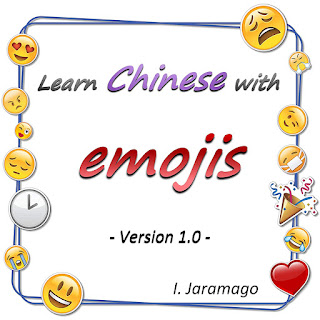
Brands in Chinese / Marcas en chino

Continents in Chinese / Continentes en chino

Percentages in Chinese / Porcentajes en chino

Big China Map / Mapa de China Grande
 Many times I have trouble finding a map of China large enough to show well different places to my students. In the link I share with you a good one (locality names in Chinese). Enjoy!
Many times I have trouble finding a map of China large enough to show well different places to my students. In the link I share with you a good one (locality names in Chinese). Enjoy!
Muchas veces tengo problemas para encontrar un mapa de China lo suficientemente grande como para mostrar bien a mis estudiantes los diferentes lugares. En el enlace comparto uno bastante bueno (nombres de localidad en chino). ¡Disfruta!
Is there a Chinese alphabet? / ¿Existe un alfabeto chino?

Quiero aprender chino, ¿por dónde empiezo?
"Quiero aprender chino, ¿por dónde empiezo?". En este artículo analizo muchos de los temores típicos en los estudiantes noveles de chino y algunas claves para aprovechar al máximo el esfuerzo dedicado al aprendizaje.
"Quiero aprender chino. ¿Qué hago: recursos gratis o clases de pago?"
La gran disyuntiva que se plantean muchos alumnos cuando empiezan a estudiar un idioma es: "¿Aprovecho los recursos gratuitos que hay por la red o me pago a un profesor que me enseñe?". Aquí comparto algunas claves que he podido entresacar a lo largo de los años y que me han ayudado a tener una visión más clara sobre qué recomendar a cada persona.

8 claves para aprender chino online
Ahorrarás tiempo y esfuerzo y podrás conseguir resultados tangibles.
2. Diseña tu horario de estudio
Can a person recognize characters just at a glance? / ¿Puede alguien reconocer los caracteres con sólo un vistazo?
Fractions in Chinese / Fracciones en chino

Reasons for learning Chinese / Por qué aprender chino
If you like to meet different people and places, enrich yourself culturally, this is your reason.
Si te gusta conocer gentes y lugares diferentes, enriquecerte culturalmente, esta es tu razón.
China facts / Datos de interés sobre China
Capital City: Bĕijīng (lit. “capital of the North”)
Language: Mandarin Chinese, Cantonese, Mongol, Uygur, Zang, Zhuang and some various others languages
Official language: Mandarin Chinese
The literal translation of the name "China" 中国 [Zhōngguó] is “Kingdom that was believed to be at the center of the world”.
La traducción literal del nombre "China" 中国 [Zhōngguó] es “Reino que se creía que estaba en el centro del mundo”.
😮 😂 Chinese jokes / Chistes en chino
我:贫穷
Péngyǒu: Nǐ shòule hěn duō. Nǐ yǒu shénme mìjué ma?
Wǒ: Pínqióng
Friend: You've lost a lot of weight! What is your secret?
Me: Poverty.
Amigo: ¡Adelgazaste un montón! ¿Cuál es tu secreto?
Yo: la pobreza
Tongue twisters in Chinese / Trabalenguas en chino
妈妈骑马,马慢,妈妈骂马
Māma qí mǎ, mǎ màn, māma mà mǎ
Mom rides horse, horse is very slow, Mom scolds the horse
Mamá monta caballo, caballo es muy lento, mamá regaña al caballo





















